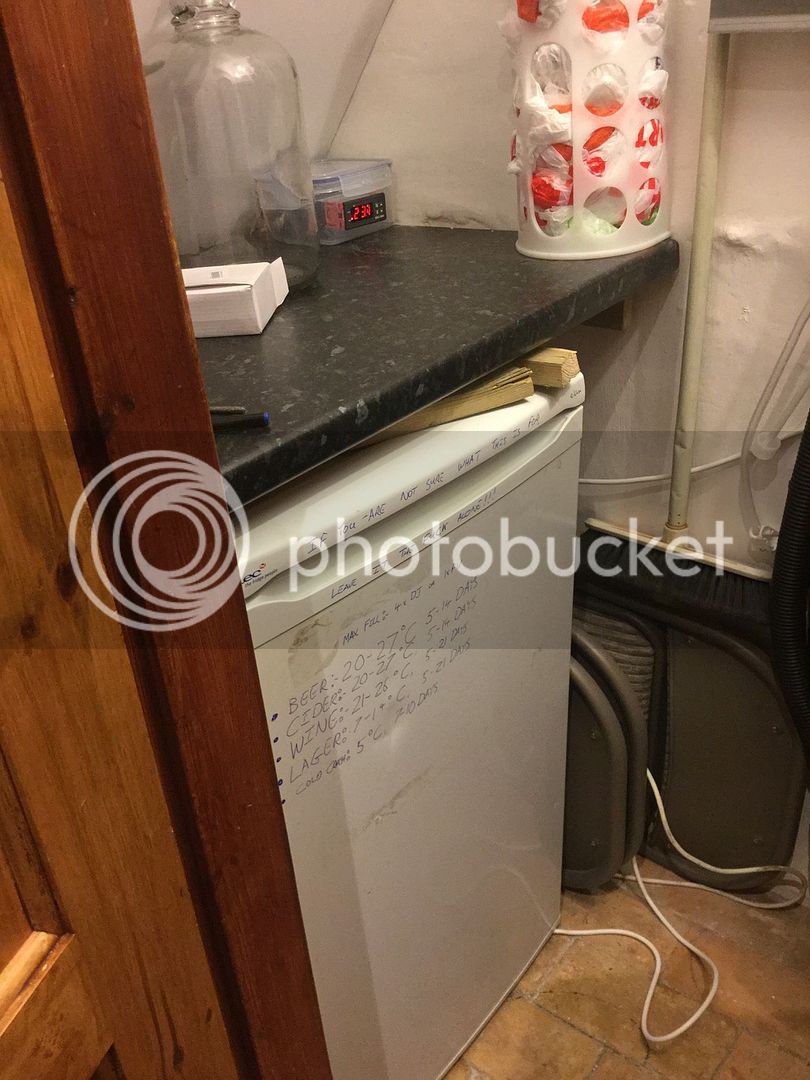It's taken a little time to gets the bits together, but I've finally finished the fermenting fridge in my home nano brewery.
Basically it's along the same lines as most other STC-1000 controlled fridges. However I've added one or two touches that I feel make the build mildly unique. The main bit is the power source for the fan. Most people seem to use an old plug in transformer from devices like cordless phones etc. But I wanted just the two plugs to contend with. So to get my 12v, I used a 12v led driver from eBay. Essentially it's a 240v ac to 12v dc stabilised transformer. This takes its power source from the tube heater, meaning the fan comes on with the heater. I figured the refrigeration part of the fridge has been designed to distribute cold air efficient, so there's only need to assist the distribution of the warm air.
The enclosure is a supermarket own brand Tupperware box, it's cheap, and easy work.
Here's a couple of pictures:


Basically it's along the same lines as most other STC-1000 controlled fridges. However I've added one or two touches that I feel make the build mildly unique. The main bit is the power source for the fan. Most people seem to use an old plug in transformer from devices like cordless phones etc. But I wanted just the two plugs to contend with. So to get my 12v, I used a 12v led driver from eBay. Essentially it's a 240v ac to 12v dc stabilised transformer. This takes its power source from the tube heater, meaning the fan comes on with the heater. I figured the refrigeration part of the fridge has been designed to distribute cold air efficient, so there's only need to assist the distribution of the warm air.
The enclosure is a supermarket own brand Tupperware box, it's cheap, and easy work.
Here's a couple of pictures:







